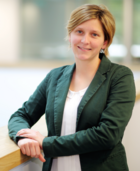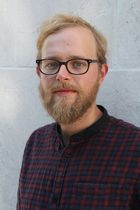Physiology and Modeling of Auditory Perception
Physiology and Modeling of Auditory Perception
Physiology and Modeling of Auditory Perception

The "Physiology and Modeling of Auditory Perception" group was created on 16 September, 2013 at the Department of Medical Physics and Acoustics at Oldenburg University in the framework of the Cluster of Excellence "Hearing4All".
Since 1 October, 2016, the former head of the group holds a professorship at Ghent University.
The group's project work is currently being continued in Oldenburg.
Research Focus
We focus on topics related to sound encoding in the normal and impaired auditory system. The approach is to probe the auditory system along its ascending pathway to understand what determines performance in psycho-acoustical tasks or speech perception. By combining physiological measures such as EEG and otoacoustic emissions with psychoacoustics and computational models, we can look at problems from different angles. This interdisciplinary approach is challenging, but very efficient and fun.
Model Code
Verhulst et al. (2012): Nonlinear time-domain cochlear model for transient stimulation and human otoacoustic emission. Download
Head

Prof. Dr. Sarah Verhulst
Hearing Technology at WAVES
Dept. of Information Technology
Ghent University
iGent Tower,Technologiepark - Zwijnaarde 15
9052 Gent, BE
Tel. +32 9 33 14 844
www.waves.intec.ugent.be/hearing-technology
s.verhulst@ugent.be
sarah.verhulst@uni-oldenburg.de
PhD Students

Markus Garrett
E-Mail : markus.garrett@uol.de
Phone : +49 441 798-3588
Fax : +49 441 798-3902
Office : W30 1-107
Scientific / Student Assistants
Graduated Students
Technical University of Denmark:
MSc Federica Bianchi (2012)
MSc Kristian Gøtsche-Rasmussen (2013)
MSc Roi Hansen (2014)
Oldenburg University:
MSc Patrycja Piktel (2014)
MSc Stefan Raufer (2014)
MSc Sabrina Pieper (2015)
MSc Markus Pelz (2016)
Collaborations
- Oldenburg University: Post-Doc Amin Saremi: Comparison of Auditory Models
- Technical University of Denmark (Prof. Santurette): Interactions between otoacoustic emissions and pitch perception (Hansen et al., 2014).
- Harvard Medical School (Prof. Shera): Generator mechanisms of otoacoustic emissions and their applications to assessing hearing status (Verhulst et al., 2011a, 2011b, 2012; Verhulst and Shera, in press)
- Boston University (Prof. Shinn-Cunningham): Modeling of experimental findings, and continued model development with Dr. Bharadwaj and G. Mehraei (Verhulst et al., in review).
- Aalto University (Prof. Pulkki): Improved computation methods to solve auditory periphery models accurately and fast (Altoè et al., 2014).


